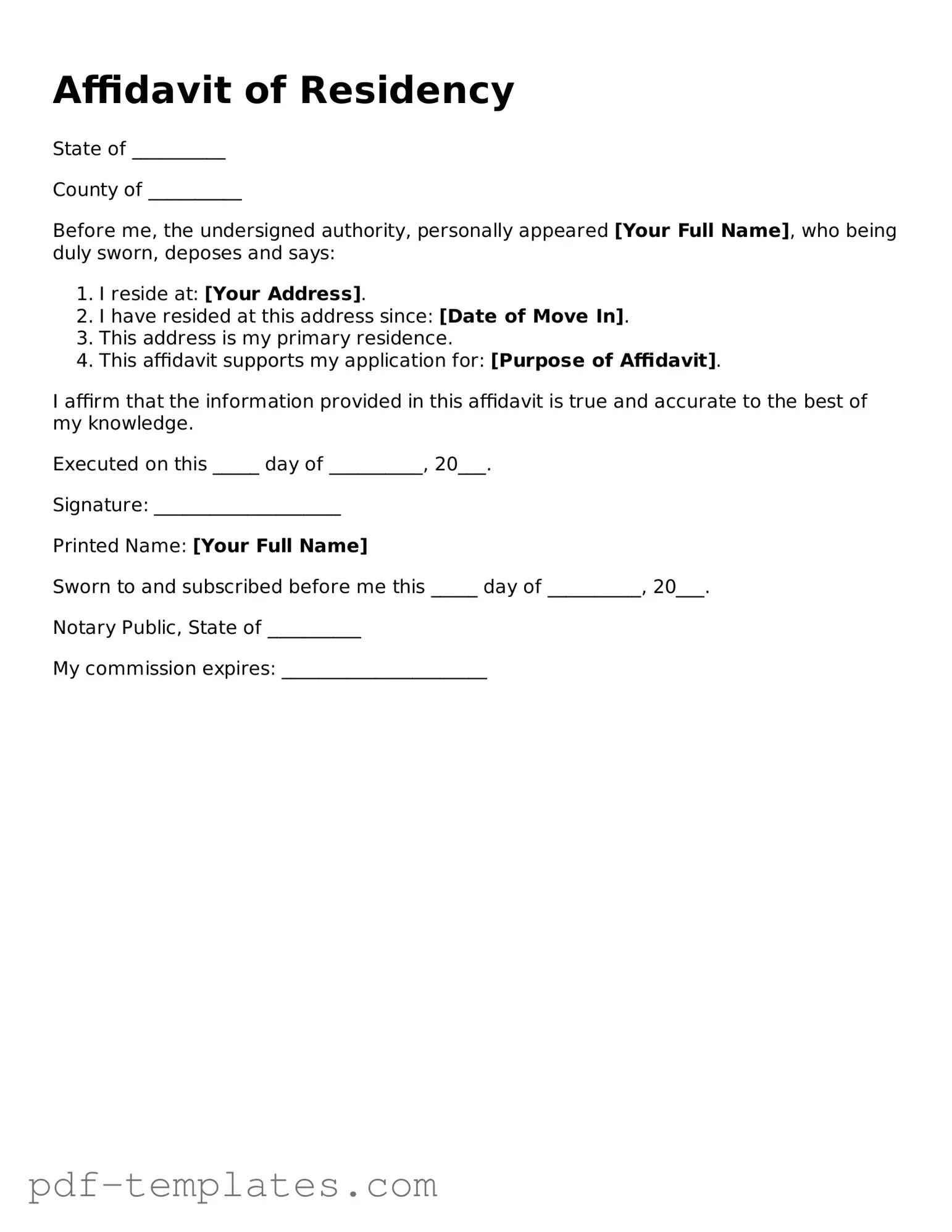The Affidavit of Residency form is similar to a Lease Agreement. A Lease Agreement outlines the terms under which one party agrees to rent property owned by another party. Both documents serve to establish a legal relationship regarding residence. While the Affidavit of Residency typically confirms where an individual lives, the Lease Agreement provides specific details about the rental terms, duration, and responsibilities of both the landlord and tenant. Both documents can serve as proof of residency in certain situations.
In the realm of legal documentation, understanding the nuances between various forms can be essential, particularly when addressing matters related to residency. For instance, both an Affidavit of Residency and a All California Forms are designed to verify an individual's living situation, albeit for different purposes. While the affidavit serves as a sworn statement for confirming residence, the loan agreement encapsulates financial transactions, ensuring that borrowers and lenders are protected under California law. Each document plays a vital role in its respective context, highlighting the importance of proper documentation in legal and financial matters.
Another document comparable to the Affidavit of Residency is the Utility Bill. A Utility Bill provides evidence of a person’s residence by showing their name and address on the bill for services such as electricity, water, or gas. Like the Affidavit, a Utility Bill can be used to verify where someone lives. However, the Utility Bill serves as an official record from a service provider, whereas the Affidavit is a sworn statement made by the individual.
The Voter Registration Card also shares similarities with the Affidavit of Residency. This card indicates where an individual is registered to vote and often includes the person’s address. Both documents affirm an individual’s residency status, but the Voter Registration Card specifically connects residency to voting eligibility. The Affidavit may be used in various contexts beyond voting, such as school enrollment or government assistance programs.
A Driver’s License can be compared to the Affidavit of Residency as well. A Driver’s License typically contains an individual’s name and address, establishing their legal residence. While both documents serve as identification, the Driver’s License is issued by a state authority and includes additional information such as age and driving privileges. The Affidavit, on the other hand, is a declaration made by the individual regarding their residency.
The Bank Statement is another document that serves a similar purpose. It often includes the account holder’s name and address, providing evidence of residency. Both the Bank Statement and the Affidavit can be used to confirm where an individual resides. However, the Bank Statement also reflects financial transactions, which may not be relevant in all situations requiring proof of residency.
The Tax Return is also akin to the Affidavit of Residency. A Tax Return includes an individual’s address and is submitted to the government for tax purposes. This document can establish residency for tax obligations. However, unlike the Affidavit, which is a sworn statement, a Tax Return is a formal report of income and financial activity, thus serving a different primary function.
The Mortgage Statement provides another point of comparison. It details the terms of a mortgage loan and includes the homeowner’s name and property address. Both the Mortgage Statement and the Affidavit can confirm residency. However, the Mortgage Statement indicates ownership of property, while the Affidavit may be used by renters or individuals living with others.
Lastly, the School Enrollment Form is similar to the Affidavit of Residency in that it often requires proof of residency for enrollment purposes. This form typically asks for documentation that confirms where a student lives. While the Affidavit serves as a sworn declaration, the School Enrollment Form may require additional documentation, such as a Utility Bill or Lease Agreement, to substantiate the claim of residency.
